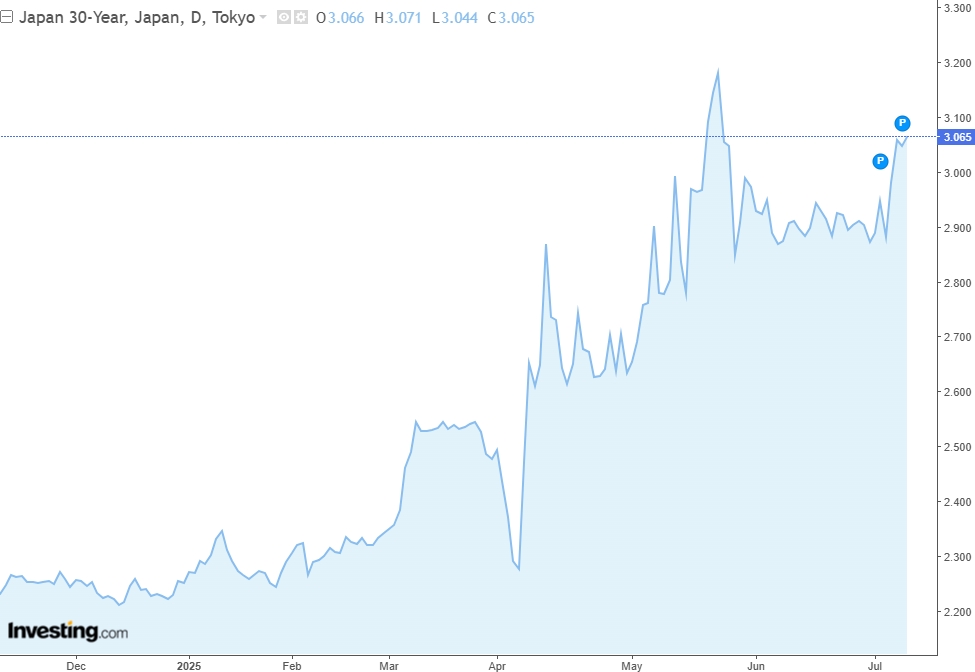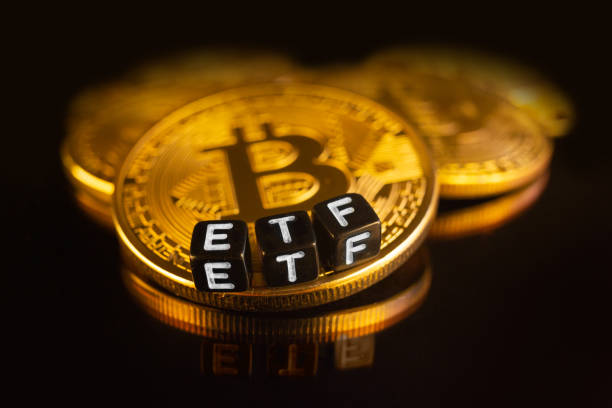20-Year JGB Auction Back in Focus as the Japan Bond Market Faces Political Risk

TradingKey - With growing concerns that Japan’s ruling coalition may lose power in the July 20 Upper House elections, and potentially unleash a new wave of large-scale fiscal stimulus, 30-year Japanese government bond (JGB) yields hit record highs, signaling the arrival of a fresh bond market selloff driven by political uncertainty.
On Tuesday, July 8 , the yield on 30-year JGBs surged over 12 basis points to 3.09% , while the 40-year yield also approached historic levels .

Chart of 30-Year JGB Yield, Source: Investing.com
The latest sell-off in Japanese bonds comes as the ruling Liberal Democratic Party (LDP) faces increasing risk of losing its majority — having already lost control of the lower house earlier this year. Analysts say it must win at least 50 out of 125 contested seats to maintain stable governance.
Recent polls suggest that the LDP and its coalition partner, Komeito, may fail to secure a majority — raising fears of policy instability.
Political Shift Could Mean More Bond Issuance
If a new government takes office with a more expansionary fiscal stance, analysts warn that Japan could increase government bond supply to fund additional stimulus measures aimed at countering trade-driven economic weakness.
Sumitomo Mitsui Trust Asset Management warned that concerns over worsening fiscal conditions are intensifying, with rising expectations that the government may ramp up spending to cushion the economy from tariff-related downturns — further pressuring long-term bonds.
Morgan Stanley analysts noted that such a scenario would lead to a steepening yield curve, as foreign investors demand higher premiums due to weaker domestic demand and increased fiscal uncertainty.
The Return of the 20-Year JGB Auction — A Spark for Long-Bond Volatility?
Société Générale analysts estimate a 50% chance of a government crisis following the election, which could trigger sharp rises in JGB yields.
They warned that in a global environment of rising deficits and highly correlated sovereign yields, a breakdown in Japan’s bond market could spark a wider global bond selloff, much like what happened in mid-to-late May 2025.
Back on May 20, Japan's 20-year bond auction recorded the weakest demand since 2012, with the bid-to-cover ratio plummeting and the tail spread hitting the worst level since 1987 — triggering a broad selloff in long-dated JGBs and sending shockwaves through global markets.
Now, investors will closely watch Thursday’s upcoming 20-year JGB auction, widely seen as the next potential catalyst for renewed volatility in the long-end of the yield curve.
Bloomberg analysts noted that both political uncertainty and rising deficit concerns are weighing heavily on investor sentiment — with market participants still digesting last week’s weak 30-year JGB auction results.







